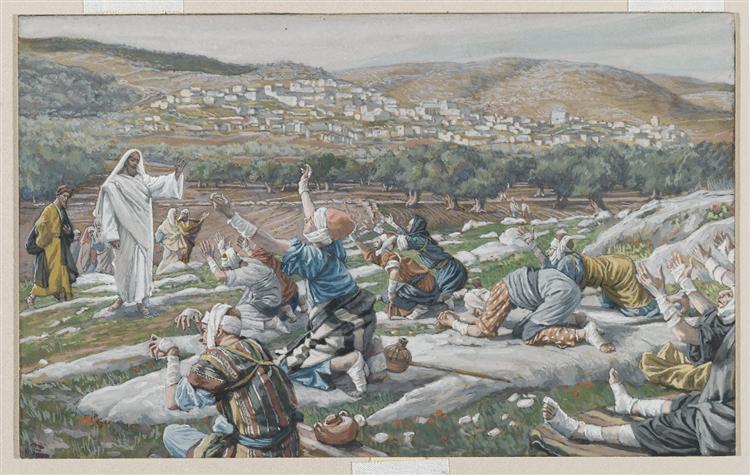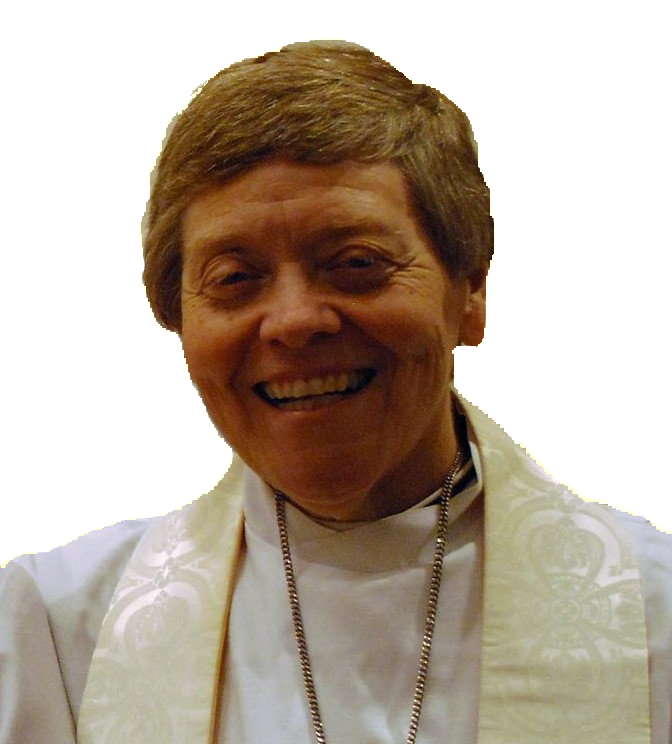Sermon 10/13/2019 “A minyan of lepers”
Preacher: Jo J. Belser
Location: Church of the Resurrection at Immanuel Chapel, Virginia Theological Seminary
Text: Luke 17:11-19
Day: 18 Pentecost, Year C (Proper 23)

Luke’s is the only gospel that tells of Jesus healing 10 lepers at one time. Earlier, in chapter 5, Luke told of an incident shared by Matthew and Mark where one leper approached Jesus, bowed at Jesus’ feet, and asked to be healed, which Jesus accomplished while touching him. Jesus then instructed him to “tell no one” and to “go to the priest as Moses had commanded and make an offering for his cleansing.”
THIS is the kind of healing we’re used to hearing about, not the healing in today’s lesson. TODAY, not one leper, but TEN lepers approached Jesus. This is a surprising number. We suspect this is an important detail, but no one knows what it means. I have a theory, though …. Ten men is a minyan, the minimum number Jews require for worship.
If these ten men had not been lepers, they never would have been together. Samaritans and Jews despised each other. But the 10 men who approached Jesus had leprosy, so we can understand how they had put aside their prejudices and formed a congregation—a community of support for each other.
Question is: Is this all a congregation is, a community of support?
t this point, it’s worth digressing a bit to tell you how Jews intuited that 10 men are the minimum required to worship God. Psalm 82:1 says, “God stands in the congregation of God.” The word for congregation, edah (ā·däh’), is also used in Numbers 14:27 in referring to an assembly of 10 spies.
This was the situation: God had freed his people from slavery in Egypt. God had led his people through the wilderness to the border of the land he had promised to give them. But the land wasn’t empty, so Moses had sent spies to determine the military strength of the people living in the land. Ten spies returned—which scripture called an “edah,” the same word as the congregation in which God is present.
From this, for the last 3,400 years (give or take a few), the Jews have understood that a “congregation of God” consists of at least 10 men. Of the spies’ report, by the way, God was not pleased. He told Moses to ask the people what kind of God they thought he was, that he would have given them something to do without giving them everything they needed to do that task.
In our gospel lesson today, Jesus was on his way to Jerusalem to make HIS Exodus from this life. Our lesson says, “Jesus was going through the region between Samaria and Galilee.” One wee little problem: THERE IS NO region between Samaria and Galilee, at least not one that leads in the direction Jesus was traveling.
So, here was Jesus, somewhere undefinable, and a whole congregation of lepers approached him. They kept their distance as they recited the Prayers of the People. You know, the prayer we say each Sunday, “Jesus, Master, have mercy.” THEY knew who Jesus was, standing in their midst; what they wanted from him was healing.
Jesus didn’t heal them, though, at least not right away. He gave them a task to do: “Go and show yourselves to the priests.” And (our lesson says) they all set out and were healed along the way.
One of the healed men seemed to disobey Jesus. HE turned back, returned to Jesus, fell at Jesus’ feet, and thanked him. And this man who seemed to have disobeyed Jesus got PRAISED for returning and received a deeper level of healing than the others: he was “made well,” “made whole.”
Just when I was contemplating this turn of events, I discovered the word for “thanked” that is used here is “eucharistia.” Light dawned; what this man did was return and worship the Christ, his priest in the order of Melchizedek, the highest high priest of all. He made his offering, as Moses had directed, a “eucharistia” of thanksgiving.
Presumably, the other nine men showed themselves to lesser priests, gave their lesser offerings, got their lesser healings certified, and returned to their pre-leprosy lives. Jesus hadn’t instructed them to silence (an earlier strategy that hadn’t worked very well, anyway), so presumably these nine told everyone they met what Jesus had done for them. Or not.
Maybe, these other nine weren’t as harsh against Samaritans after their healing, after they had shared a minyan with a Samaritan. We just don’t know about this. What we do know is that a new worship quorum was established that day: not 10 adult males but one person and a priest giving thanks for what Christ Jesus has done for them. This, friends, is the essence of the eucharist.
Each year we celebrate Maundy Thursday as the day Jesus instituted the Eucharist, when Jesus shared Passover with his friends and offered bread and wine as his Body and Blood, given for them and for us. And that meal on that day IS when the Body and Blood became part of the Eucharistic meal.
But this incident today is the real beginning of the Eucharist, the thanksgiving we express for the one who makes us whole.
At Forum last Sunday we talked about “the holy catholic church” and the positive aspects of church. Here’s what I heard: church at its best (“our own church,” you said, and I agree) is a community, a fellowship, a gathering of people who have been healed or who are in search of healing, people who have learned to care for each other and whose care reaches beyond the church community to care for others. Maybe we should make explicit what we also think but have to push ourselves to say: we are people who are grateful for all that God has given us, so we come together—the minyan that is Church of the Resurrection—to give thanks to Christ Jesus and make our offerings of gratitude to God, then leave here to tell others we have been healed.

